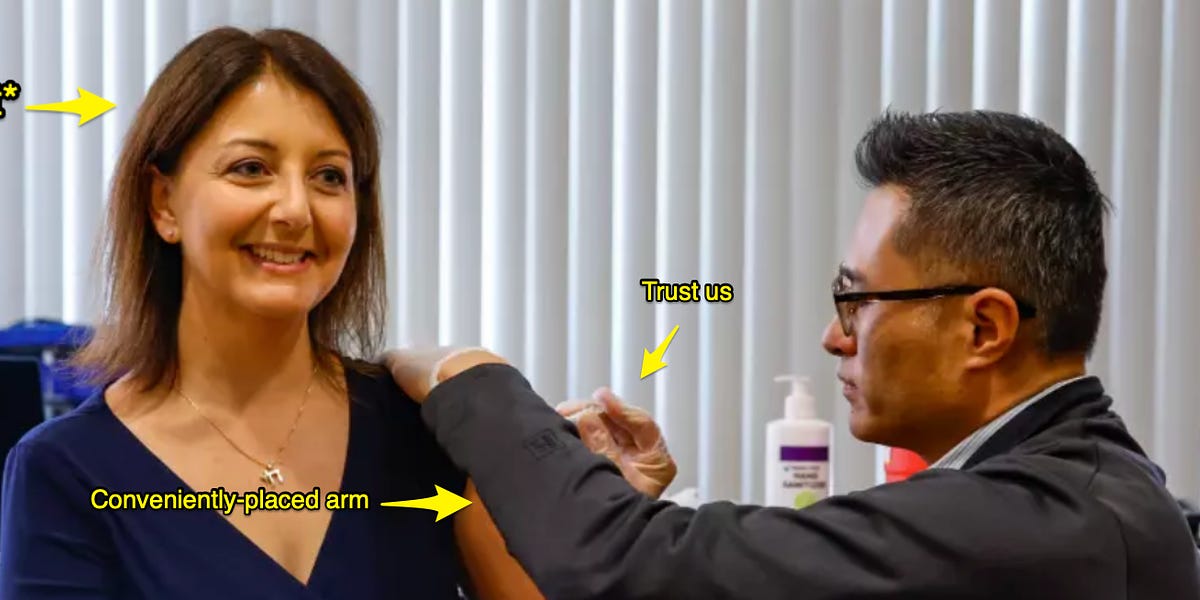Thus forewarned, the reader plunges into a thicket of social-justice maxims: physicians must “confront inequities and dismantle white supremacy, racism, and other forms of exclusion and structured oppression, as well as embed racial justice and advance equity within and across all aspects of health systems.” The country needs to pivot “from euphemisms to explicit conversations about power, racism, gender and class oppression, forms of discrimination and exclusion.” (The reader may puzzle over how much more “explicit” current “conversations” about racism can be.) We need to discard “America’s stronghold of false notions of hierarchy of value based on gender, skin color, religion, ability and country of origin, as well as other forms of privilege.”
A key solution to this alleged oppression is identity-based preferences throughout the medical profession. The AMA strategic plan calls for the “just representation of Black, Indigenous and Latinx people in medical school admissions as well as . . . leadership ranks.” The lack of “just representation,” according to the AMA, is due to deliberate “exclusion,” which will end only when we have “prioritize[d] and integrate[d] the voices and ideas of people and communities experiencing great injustice and historically excluded, exploited, and deprived of needed resources such as people of color, women, people with disabilities, LGBTQ+, and those in rural and urban communities alike.”
According to medical and STEM leaders, to be white is to be per se racist; apologies and reparations for that offending trait are now de rigueur. In June 2020, Nature identified itself as one of the culpably “white institutions that is responsible for bias in research and scholarship.” In January 2021, the editor-in-chief of Health Affairs lamented that “our own staff and leadership are overwhelmingly white.” The AMA’s strategic plan blames “white male lawmakers” for America’s systemic racism.
And so medical schools and medical societies are discarding traditional standards of merit in order to alter the demographic characteristics of their profession. That demolition of standards rests on an a priori truth: that there is no academic skills gap between whites and Asians, on the one hand, and blacks and Hispanics, on the other. No proof is needed for this proposition; it is the starting point for any discussion of racial disparities in medical personnel. Therefore, any test or evaluation on which blacks and Hispanics score worse than whites and Asians is biased and should be eliminated.
The U.S. Medical Licensing Exam is a prime offender. At the end of their second year of medical school, students take Step One of the USMLE, which measures knowledge of the body’s anatomical parts, their functioning, and their malfunctioning; topics include biochemistry, physiology, cell biology, pharmacology, and the cardiovascular system. High scores on Step One predict success in a residency; highly sought-after residency programs, such as neurosurgery and radiology, use Step One scores to help select applicants.
Black students are not admitted into competitive residencies at the same rate as whites because their average Step One test scores are a standard deviation below those of whites. Step One has already been modified to try to shrink that gap; it now includes nonscience components such as “communication and interpersonal skills.” But the standard deviation in scores has persisted. In the world of antiracism, that persistence means only one thing: the test is to blame. It is Step One that, in the language of antiracism, “disadvantages” underrepresented minorities, not any lesser degree of medical knowledge.

 www.city-journal.org
www.city-journal.org
A key solution to this alleged oppression is identity-based preferences throughout the medical profession. The AMA strategic plan calls for the “just representation of Black, Indigenous and Latinx people in medical school admissions as well as . . . leadership ranks.” The lack of “just representation,” according to the AMA, is due to deliberate “exclusion,” which will end only when we have “prioritize[d] and integrate[d] the voices and ideas of people and communities experiencing great injustice and historically excluded, exploited, and deprived of needed resources such as people of color, women, people with disabilities, LGBTQ+, and those in rural and urban communities alike.”
According to medical and STEM leaders, to be white is to be per se racist; apologies and reparations for that offending trait are now de rigueur. In June 2020, Nature identified itself as one of the culpably “white institutions that is responsible for bias in research and scholarship.” In January 2021, the editor-in-chief of Health Affairs lamented that “our own staff and leadership are overwhelmingly white.” The AMA’s strategic plan blames “white male lawmakers” for America’s systemic racism.
And so medical schools and medical societies are discarding traditional standards of merit in order to alter the demographic characteristics of their profession. That demolition of standards rests on an a priori truth: that there is no academic skills gap between whites and Asians, on the one hand, and blacks and Hispanics, on the other. No proof is needed for this proposition; it is the starting point for any discussion of racial disparities in medical personnel. Therefore, any test or evaluation on which blacks and Hispanics score worse than whites and Asians is biased and should be eliminated.
The U.S. Medical Licensing Exam is a prime offender. At the end of their second year of medical school, students take Step One of the USMLE, which measures knowledge of the body’s anatomical parts, their functioning, and their malfunctioning; topics include biochemistry, physiology, cell biology, pharmacology, and the cardiovascular system. High scores on Step One predict success in a residency; highly sought-after residency programs, such as neurosurgery and radiology, use Step One scores to help select applicants.
Black students are not admitted into competitive residencies at the same rate as whites because their average Step One test scores are a standard deviation below those of whites. Step One has already been modified to try to shrink that gap; it now includes nonscience components such as “communication and interpersonal skills.” But the standard deviation in scores has persisted. In the world of antiracism, that persistence means only one thing: the test is to blame. It is Step One that, in the language of antiracism, “disadvantages” underrepresented minorities, not any lesser degree of medical knowledge.

The Corruption of Medicine
The post–George Floyd racial reckoning has hit the field of medicine like an earthquake. Medical education, medical research, and standards of competence have been upended by two related hypotheses: that systemic racism is responsible both for racial disparities in the demographics of the...
 www.city-journal.org
www.city-journal.org




